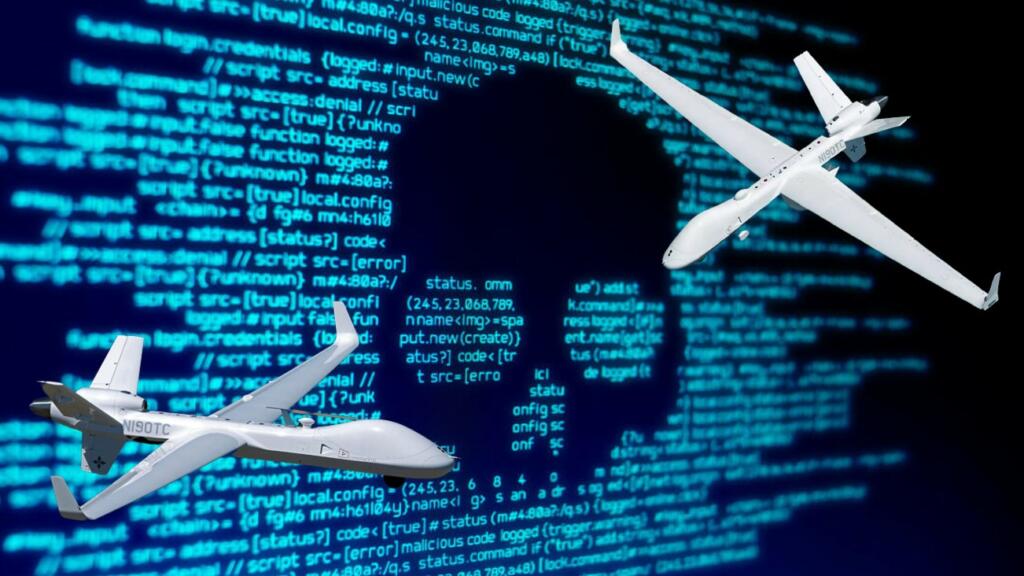Notice the steep hike in petrol and diesel prices? That’s a direct consequence of the war between Russia and Ukraine. But that’s not what we will be talking about today. In fact, the discussion will revolve around the future of warfare. Traditionally, wars have been fought using brute force. The war in Ukraine is being fought in a similar manner as well. However, warfare is evolving, and the same is visible in the ongoing war itself. What we are seeing right now are precursors to how wars will look in the near future.
Ramming each other’s militaries is an expensive and completely avoidable way to fight a war. Why waste human life and military infrastructure when you can win a conflict without losing any human resources? For example, unmanned ariel vehicles (UAVs) or armed drones require no human to be controlling them physically. Instead, these drones can obliterate the enemy’s resources, troops, and infrastructure all on their own.
Armed Drones, and Why They Matter
Russia’s war was supposed to be a swift one. Russia’s primary objective was to topple Kyiv and effectuate a regime change in Ukraine. It has not been able to do so until now. Why you might ask? You see, Ukraine has in its inventory the lethal Byraktar TB-2 armed drones manufactured by Turkey, and these have been instrumental in ambushing and attacking Russia’s advancing convoys.
They have slowed the Russians down and forced the Kremlin to rethink its strategy in Ukraine. Initially, Russia did not employ its own armed drones in the war. However, as days passed, it changed that strategy and pushed its own drones into Ukrainian skies.
Armed drones are comparatively small; are highly manoeuvrable and cannot be detected easily. Their heat signature is really low when compared to fighter aircraft. And if they are downed, they do not cost a soldier his life. So, more and more countries are embracing UAV technology.
Where does India Stand?
The most obvious question to ask now would be this: what is India doing about UAV technology and what lessons is it learning from conflicts around the world? Mind you, Ukraine is not the only region where armed drones have proven their mettle. In Syria and the Nagorno Karabakh region, these armed drones have tilted the scales rather decisively in favour of the side that operates them.
So, for a country like India which faces enemy nations in its North and West, it makes complete sense to draw many lessons and imbibe UAV technology on an immediate basis.
India has banned the import of foreign-made drones. Of course, that in no way means India will not be importing armed drones of the highest quality from around the world. The import ban largely pertains to non-combat drones.
When it comes to unmanned ariel vehicles, India is looking to import the same from the United States of America and Israel. India currently has Israeli drones in its armoury. However, a real shot in the arm is on the horizon as New Delhi and Washington look to finalise a big Predator drone deal in the near future. Predator drones are the most superior UAVs around the world; and India plans to give its Army, Navy, and Air Force close to 30 of them each.
Separately, India and the U.S. are also working together to develop UAVs that can be launched from aircraft.
Cyberwarfare
What makes more sense? Fighting a long, bloody, and high-cost war against any enemy nation to achieve certain objectives; or to simply cripple the foe into submission? The latter, mind you, will be a non-violent way of achieving your objectives. That is what cyberwarfare promises. Instead of destroying a country militarily, future wars will be fought on the basis of how that country’s institutions, power grids and internet can be shut off. How satellite services catering to that country can be blown off, and how its economy can be run into the ground.
India is laying great importance on the potential of cyber warfare. Separately, the Ministry of Defence and industry partner Bharat Electronics Limited (BEL) recently signed an agreement to supply the Indian Air Force with an advanced Electronic Warfare suite for its fighter aircraft. The system will cripple the ability of enemy militaries to access much-needed information for operations against India.
India is among an elite league of nations that possess anti-satellite capabilities. India has also developed dedicated cyber warfare units from within its military arms.
Read more: Modi Government forms space division, special operations and cyber warfare division
That being said, there is a long way for India to go still. This is no time to rejoice. India needs to significantly up its game in cyberwarfare, as well as in the UAV space. Without it, India will stand at a disadvantage to fight future conflicts in a spirited manner.
Tanks should not be India’s focus any longer. Entire columns of combat vehicles and tanks can be taken out by drones. They are much more expensive than drones, and also result in the loss of human resources. India must prepare for the future and look to fill its armoury with the cutting-edge drone and cyber warfare technologies.
